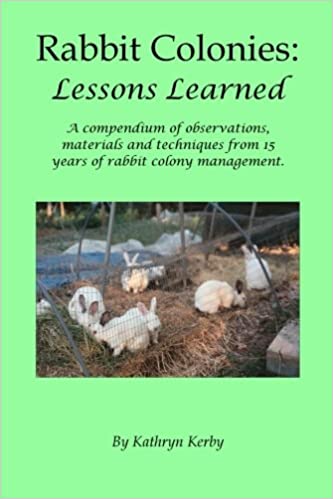Heritage Breeds and Livestock Conservation
There used to be a time when each region boasted its own varieties of livestock. The poultry, the goats and sheep, the waterfowl, the pigs and cows, even the horses had all been bred for centuries to thrive in those particular regions. They built up resistance or coping mechanisms for the local weather extremes, disease issues, parasites and nutritional challenges.
Then came the industrialization of agriculture. Animals were treated like mechanical objects and housed in minimal conditions. They were fed standardized rations regardless of their location or circumstances, and sometimes without regard for their biological needs. A few breeds tolerated that treatment well enough and remained productive, so they became the favorite breeds for that species for commercialized production. Sadly, for several decades that model of agriculture was taught as the "best" ad sometimes the "only" way to raise livestock. Some who were witness to that process believed they were watching the death of American agriculture.
Happily, enough people were still interested enough in traditional methods, and in the merits of genetic diversity, that such a bleak fate did not materialize. At the same time, the industrialized production model began showing stress cracks, which only grew worse in subsequent years. Those highly productive breeds proved to have very high maintenance requirements, experienced rapid burnout under industrial production management, and were not well equipped to weather diverse climate, parasite and temperature conditions. In short, this experiment in treating animals like machines only proved that one size does not fit all very well.
Meanwhile, a whole new group of people began to explore small scale animal production. The back to the land movement waxed and waned over the next several generations but families steadily looked for ways to move back to family farm methods, including small scale livestock production. Bringing the "culture" back to "agriculture" became as important a goal as financial return and production levels.
At the same time, scientists studying lack of genetic diversity in wild animal populations began to realize that the same risks faced domestic animal populations - a lack of genetic diversity resulted in less ability to thrive in various conditions. Large, productive animals would struggle in less than ideal conditions. Breeds developed in temperate climates did not fare well in hot, dry locations. The situation had come full circle, but now those breeds which used to thrive in those various conditions were often close to extinction. Those bloodlines which had once provided goods to small family farms now needed small family farms to rescue them.
Breed Conservation Efforts
Those who were interested in protecting these breeds from extinction gathered together in various groups and began to assess the situation. In some cases, the old breeds were still available in large healthy populations, and their breed organizations had a new mission to promote their various special adaptations. In some cases, those old breeds had already died out. The genetics they had provided were lost forever. In many cases, those valuable breeds were still out there, in pockets here and there, often cross-bred with other animals, sometimes unidentified and unrecognized as valuable sources for rare genetics. Groups like the Association for Poultry Antiquities and American Livestock Breeds Conservancy, along with sister organizations in other countries, began collecting census data on which breeds were still available, and which organizations were still tracking new populations. Cutting edge genetic assessment was done on some of the rarer breeds to determine if those populations could be successfully revived and maintained. A ratings system was developed to flag those breeds at risk of dying out, those who needed protection, those who were on the rebound and those populations that were in good shape.
Most importantly, the advent of the Internet allowed those findings to be easily distributed to a wide variety of groups - livestock growers, FFA and 4H groups, breed associations and small farm advocacy groups. The more people learned about the fate of rare breeds, the more people began raising rare breeds, either to simply protect favorite breeds or incorporate those rare genes into functional farm operations.
The Role of Rare Breeds
Here at Frog Chorus Farm
We have been very privileged to be a part of this rare breeds preservation work. For each type of animal we have brought onto the farm, we have deliberately searched for and selected breeds that are well adapted to our conditions - a cool, damp climate, a minimum of concentrated feeds, an open social housing system, and close, frequent human contact.
We also needed our animals to provide for the farm. They needed to be healthy, productive, efficient and low maintenance. We were not interested in a lot of vet bills, aggressive or rowdy animals, and difficult breeding, feeding or maintenance. Happily, many of the qualities that made these animals so successful on small family farms of yesteryear are still very desirable today. Happily, those genes are still very much at work, and our animals continue to provide very good productivity here, with relatively little input. And we are very happy to know that we can go into any of our animal yards, at any time, and work with happy, well socialized, agreeable animals.
Our Successful Farming and Ranching Books

We released our very first self-published book. The Chicken Coop Manual in 2014. It is a full color guide to conventional and alternative poultry housing options, including 8 conventional stud construction plans, 12 alternative housing methods, and almost 20 different design features. This book is available on Amazon.com and as a PDF download. Please visit The Chicken Coop Manual page for more information.

Rabbit Colonies: Lessons Learned
We started with rabbits in 2002, and we've been experimenting with colony management ever since. Fast forward to 2017, when I decided to write another book, this time about colony management. The book is chock-full of practical information, and is available from both Amazon and as a PDF download. Please visit the Rabbit Colonies page for more information.
The Pastured Pig Handbook
We are currently working on our next self-published book: The Pastured Pig Handbook. This particular book addresses a profitable, popular and successful hog management approach which sadly is not yet well documented. Our handbook, will cover all the various issues involved with pastured hog management, including case studies of numerous current pastured pig operations. If you have any questions about this book, please Contact Us.

Weblog Archives
We published a farm blog between January 2011 and April 2012. We reluctantly ceased writing them due to time constraints, and we hope to begin writing them again someday. In the meantime, we offer a Weblog Archive so that readers can access past blog articles at any time.
If and when we return to writing blogs, we'll post that news here. Until then, happy reading!




